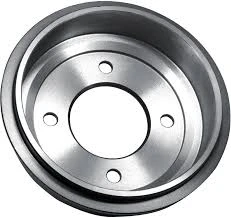
-
 Afrikaans
Afrikaans -
 Albanian
Albanian -
 Amharic
Amharic -
 Arabic
Arabic -
 Armenian
Armenian -
 Azerbaijani
Azerbaijani -
 Basque
Basque -
 Belarusian
Belarusian -
 Bengali
Bengali -
 Bosnian
Bosnian -
 Bulgarian
Bulgarian -
 Catalan
Catalan -
 Cebuano
Cebuano -
 Corsican
Corsican -
 Croatian
Croatian -
 Czech
Czech -
 Danish
Danish -
 Dutch
Dutch -
 English
English -
 Esperanto
Esperanto -
 Estonian
Estonian -
 Finnish
Finnish -
 French
French -
 Frisian
Frisian -
 Galician
Galician -
 Georgian
Georgian -
 German
German -
 Greek
Greek -
 Gujarati
Gujarati -
 Haitian Creole
Haitian Creole -
 hausa
hausa -
 hawaiian
hawaiian -
 Hebrew
Hebrew -
 Hindi
Hindi -
 Miao
Miao -
 Hungarian
Hungarian -
 Icelandic
Icelandic -
 igbo
igbo -
 Indonesian
Indonesian -
 irish
irish -
 Italian
Italian -
 Japanese
Japanese -
 Javanese
Javanese -
 Kannada
Kannada -
 kazakh
kazakh -
 Khmer
Khmer -
 Rwandese
Rwandese -
 Korean
Korean -
 Kurdish
Kurdish -
 Kyrgyz
Kyrgyz -
 Lao
Lao -
 Latin
Latin -
 Latvian
Latvian -
 Lithuanian
Lithuanian -
 Luxembourgish
Luxembourgish -
 Macedonian
Macedonian -
 Malgashi
Malgashi -
 Malay
Malay -
 Malayalam
Malayalam -
 Maltese
Maltese -
 Maori
Maori -
 Marathi
Marathi -
 Mongolian
Mongolian -
 Myanmar
Myanmar -
 Nepali
Nepali -
 Norwegian
Norwegian -
 Norwegian
Norwegian -
 Occitan
Occitan -
 Pashto
Pashto -
 Persian
Persian -
 Polish
Polish -
 Portuguese
Portuguese -
 Punjabi
Punjabi -
 Romanian
Romanian -
 Russian
Russian -
 Samoan
Samoan -
 Scottish Gaelic
Scottish Gaelic -
 Serbian
Serbian -
 Sesotho
Sesotho -
 Shona
Shona -
 Sindhi
Sindhi -
 Sinhala
Sinhala -
 Slovak
Slovak -
 Slovenian
Slovenian -
 Somali
Somali -
 Spanish
Spanish -
 Sundanese
Sundanese -
 Swahili
Swahili -
 Swedish
Swedish -
 Tagalog
Tagalog -
 Tajik
Tajik -
 Tamil
Tamil -
 Tatar
Tatar -
 Telugu
Telugu -
 Thai
Thai -
 Turkish
Turkish -
 Turkmen
Turkmen -
 Ukrainian
Ukrainian -
 Urdu
Urdu -
 Uighur
Uighur -
 Uzbek
Uzbek -
 Vietnamese
Vietnamese -
 Welsh
Welsh -
 Bantu
Bantu -
 Yiddish
Yiddish -
 Yoruba
Yoruba -
 Zulu
Zulu
brake drum retaining screw
Understanding Brake Drum Retaining Screws Importance and Application
Brake systems are essential to vehicle safety, and among the myriad components that ensure effective braking, the brake drum retaining screws play a critical yet often overlooked role. This article will delve into the importance of brake drum retaining screws, their application, and maintenance tips.
What Are Brake Drum Retaining Screws?
Brake drum retaining screws are small but significant fasteners used to secure the brake drum to the wheel hub. Their primary purpose is to prevent the brake drum from loosening, especially during extreme conditions such as high-speed driving or heavy braking. These screws are typically made of durable materials to withstand the enormous forces exerted on them during operation. In most cases, they are designed with a specialized head that allows for easy installation and removal, ensuring that mechanics can service the brakes efficiently.
Importance of Brake Drum Retaining Screws
The role of brake drum retaining screws may seem minor compared to other components of the braking system, but their significance cannot be understated. First and foremost, these screws enhance the safety of the vehicle. A loose brake drum can lead to a range of issues, including uneven braking, increased wear on brake components, and in severe cases, brake failure. This can compromise vehicle control and lead to accidents, making proper installation and maintenance of retaining screws critical.
brake drum retaining screw

Additionally, retaining screws contribute to the efficient operation of the braking system. When properly secured, the brake drum performs optimally, aiding in consistent friction and ensuring effective stopping power. Furthermore, in vehicles where braking performance is crucial, such as racing or heavy-duty vehicles, these screws become even more vital as they help maintain stability under demanding conditions.
Installation and Maintenance
When installing brake drum retaining screws, it is important to ensure that they are tightened to the manufacturer’s specifications. Over-tightening may lead to damage to the threads or the brake drum itself, while under-tightening can result in loosening during operation. Generally, a torque wrench is recommended to achieve the appropriate tension.
Regular maintenance checks should include inspecting the condition of the retaining screws. Mechanics should look for signs of wear, corrosion, or damage. If any degradation is noted, replacing the screws is necessary to maintain the integrity of the braking system. Additionally, when replacing brake drums, it is imperative to install new retaining screws, as old ones may have sustained wear that compromises their effectiveness.
Conclusion
In conclusion, while brake drum retaining screws may appear to be a minor component in the vast array of vehicle parts, their role is crucial for safety and performance. Proper installation, regular inspection, and timely replacement when necessary can prevent potential failures and ensure that the vehicle operates under safe conditions. For both vehicle owners and mechanics, acknowledging the importance of every component, including retaining screws, is vital to maintaining overall vehicle integrity and safety. Remember, investing time in the small details can lead to significant improvements in performance and safety.
-
What Are Drum BrakesNewsJul.07,2025
-
Understanding Brake Drum MaterialNewsJul.07,2025
-
Semi-Trailer Brake Drum: A Key Component for Extreme Loads and Long-Distance TransportNewsJul.07,2025
-
Drum Brake Pads for SaleNewsJul.07,2025
-
Brake Drums for SaleNewsJul.07,2025
-
Brake Drum ManufacturerNewsJul.07,2025
-
Aluminum Brake Drums: The Future of High-Performance CarsNewsJul.07,2025
